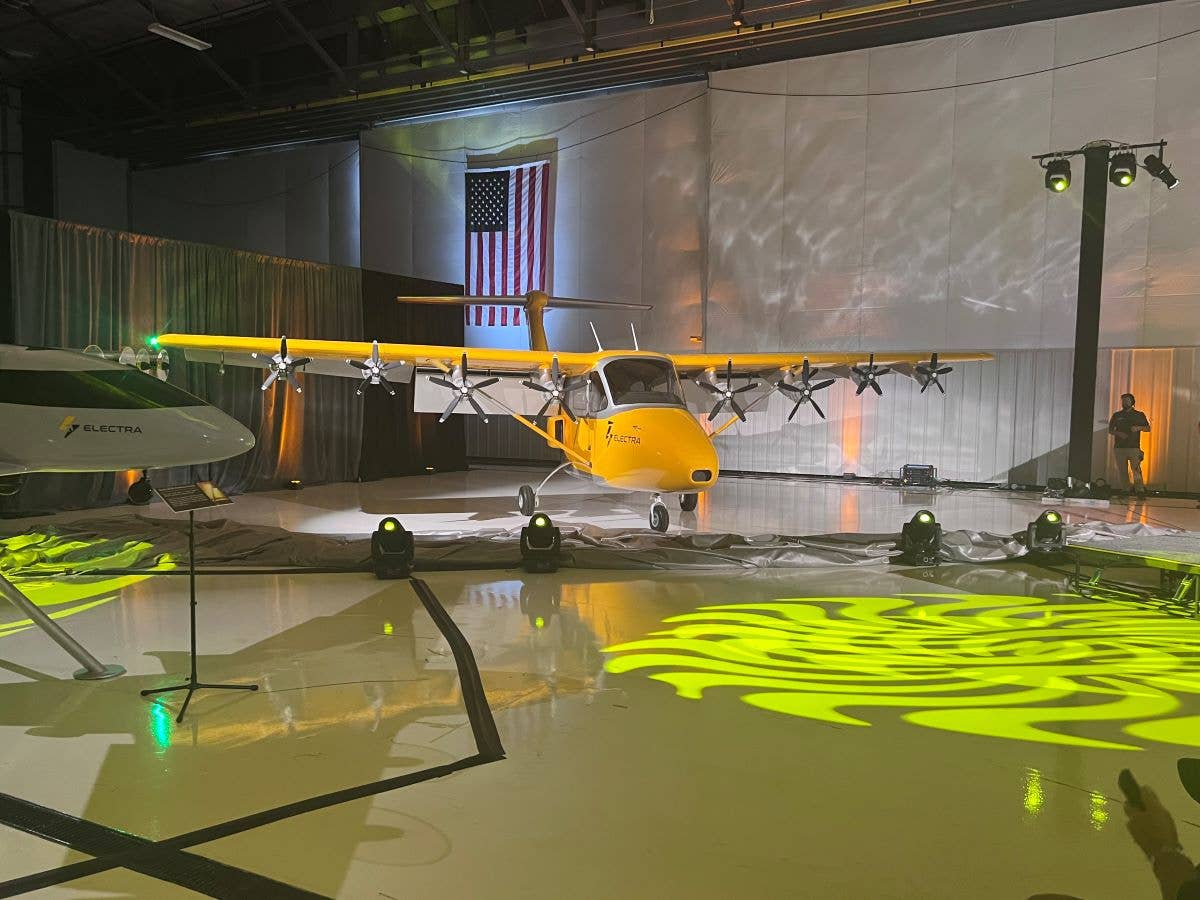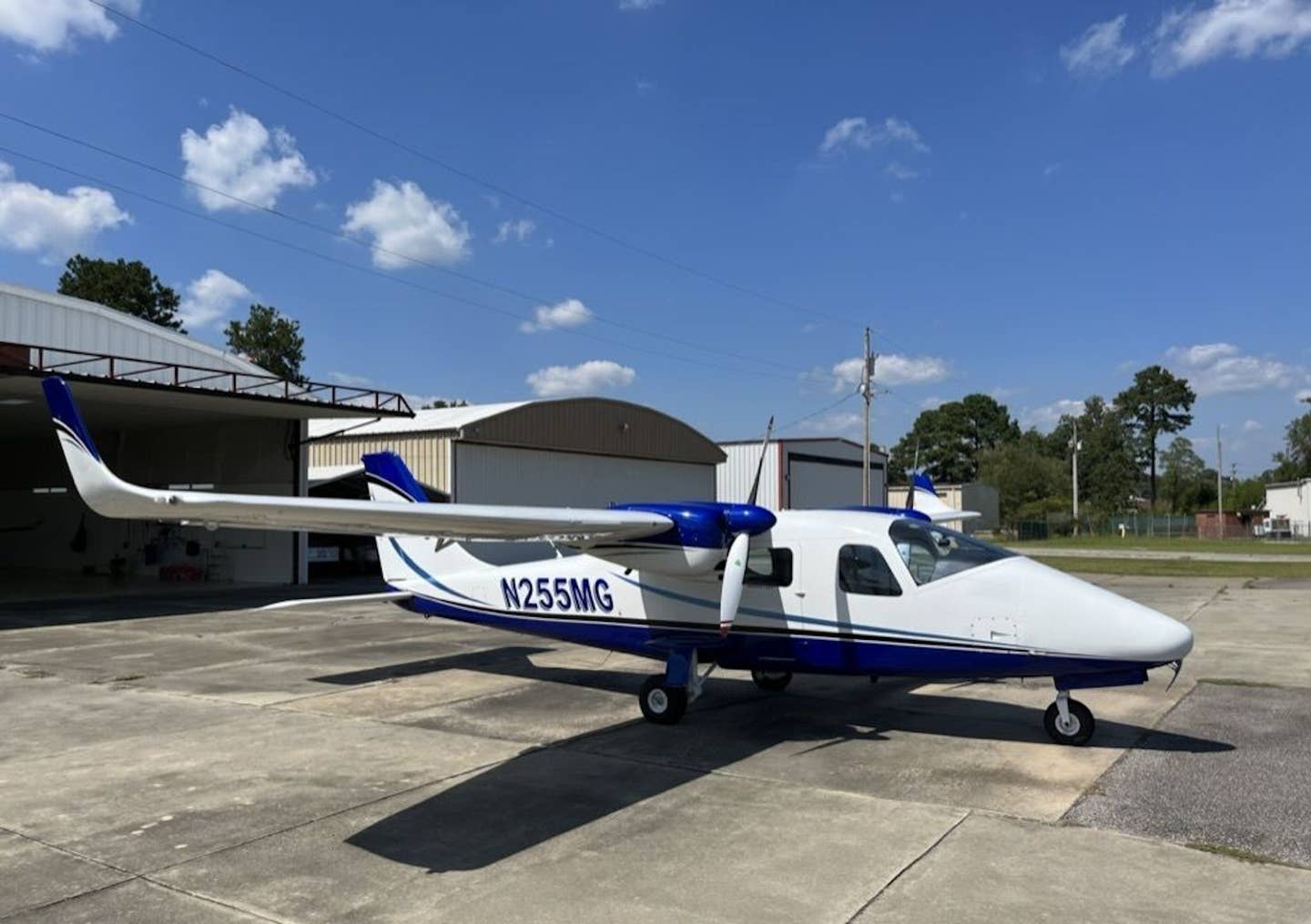Electra.aero Unveils Hybrid-Electric STOL Demonstrator
The test vehicle aims to help prove the company’s blown-lift technology.

The Electra Aero’s technology demonstrator, named “Goldfinch,” was rolled out at an event at the company’s hangar at the Manassas Regional Airport in Virginia. [Credit: Stephen Yeates]
At a hangar on the Manassas Regional Airport (KHEF), in Virginia, Electra.aero has been quietly working at its core mission: to prove the application of blown-lift technology in a piloted aircraft.
Electra.aero unveiled the eSTOL (electric short takeoff and landing) demonstrator at a special ceremony at 5 p.m. EDT Monday to present the concept and answer questions about both the technology and vision for its future use. According to the company, the aircraft represents the first use of blown lift using distributed electrical propulsion, allowing the airplane to to take off and land in short distances.
The two-seat airplane utilizes eight motors and an internal hybrid-electric power generator to recharge its battery system. The company plans to put the aircraft into a full flight test program this summer as it works towards a nine-seat production model. The production version is expected to begin testing in 2025. In all, the company anticipates the final version to carry 2.5 times the payload and exhibit a 10-times-longer range with 70 percent lower operating costs than vertical takeoff alternatives. Electra.aero claims this will transpire “with much less certification risk, proving that climate-friendly technology can also be cost-effective.”
“In the three years since we founded Electra, we’ve designed our eSTOL aircraft, validated our blown-lift technology with a subscale demonstrator, and run a fully integrated test of our 150-kilowatt, hybrid-electric generator at full scale,’’ said John Langford, founder and CEO of Electra.aero. “Now we’re ready to test the entire system with this technology demonstrator aircraft. We can’t wait to fly this plane and show the world what our eSTOL aircraft can do.”
Electra expects a 1,900-pound passenger and cargo load capacity, and it’s shooting for a 434 nm (500 sm) range.
Certification and Investor Backing
The idea is to give operators the best of both worlds—airplane and rotorcraft—with the capability to use similar spaces to land and take off. Entry into service is hoped for 2028, with the company seeking FAA Part 23 type certification by that time. Electra’s financial backing comes from a recent $30 million funding award from the U.S. Air Force as part of a total of $85 million it can draw from. The company also holds letters of intent from more than 30 potential customers, with a valuation of $4 billion if fully realized.
“Electra was founded to build electric aircraft that make sense,” said J.P. Stewart, vice president and general manager for Electra. “We are meeting market demand for cleaner, cost-effective aircraft that can fly people and cargo closer to where they want to go, and this technology demonstrator aircraft will prove that our eSTOL technology makes that possible.”
Launch partners Bristol and Southern Airways were on hand for the rollout, along with representatives from the Air Force’s Agility Prime program. Ground tests will continue this month, with first flight anticipated later this summer.

Subscribe to Our Newsletter
Get the latest FLYING stories delivered directly to your inbox






